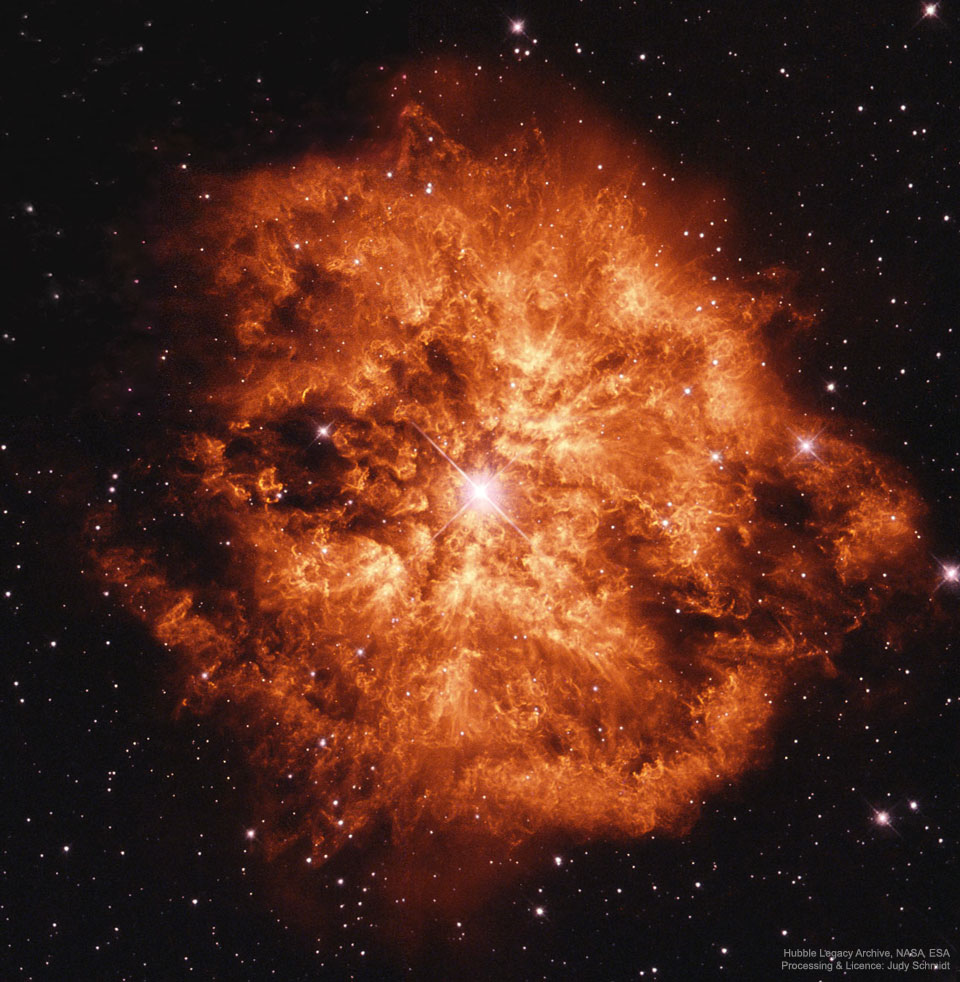2020 March 8
Wolf-Rayet Star 124: Stellar Wind Machine
Image Credit: Hubble Legacy Archive, NASA, ESA; Processing & License: Judy Schmidt
Explanation: Some stars explode in slow motion. Rare, massive Wolf-Rayet stars are so tumultuous and hot that they are slowly disintegrating right before our telescopes. Glowing gas globs each typically over 30 times more massive than the Earth are being expelled by violent stellar winds. Wolf-Rayet star WR 124, visible near the featured image center spanning six light years across, is thus creating the surrounding nebula known as M1-67. Details of why this star has been slowly blowing itself apart over the past 20,000 years remains a topic of research. WR 124 lies 15,000 light-years away towards the constellation of the Arrow (Sagitta). The fate of any given Wolf-Rayet star likely depends on how massive it is, but many are thought to end their lives with spectacular explosions such as supernovas or gamma-ray bursts.
Tomorrow’s picture: light after sunset
沃尔夫-拉叶星124: 星风机
影像来源及版权:Hubble Legacy Archive,NASA,ESA;处理&许可:Judy Schmidt
说明:有些恒星正在慢速崩解。这张图展示了一个罕见的场景:一颗大质量的沃尔夫·拉叶星十分动荡和炽热,它正在我们的望远镜前缓慢解体。剧烈的恒星风将发光的气体小球喷出,这些球每一个的典型质量都比地球大30倍以上。沃尔夫·拉叶星WR 124在上图的中心附近可见,形成了围绕在周围的被称为M1-67的星云,跨度约6光年。为什么这颗恒星在过去的20,000年里一直在缓慢地分崩离析?相关细节仍然是一个研究课题。WR 124位于一个小星座——天箭座,距离我们约15,000光年。任何一颗沃尔夫-拉叶星的命运可能都取决于它的质量,科学家认为,许多这样的恒星会以超新星或伽马射线爆等壮观的爆炸形式来结束自己的生命。
明日一图预告:light after sunset




就像火焰一样。